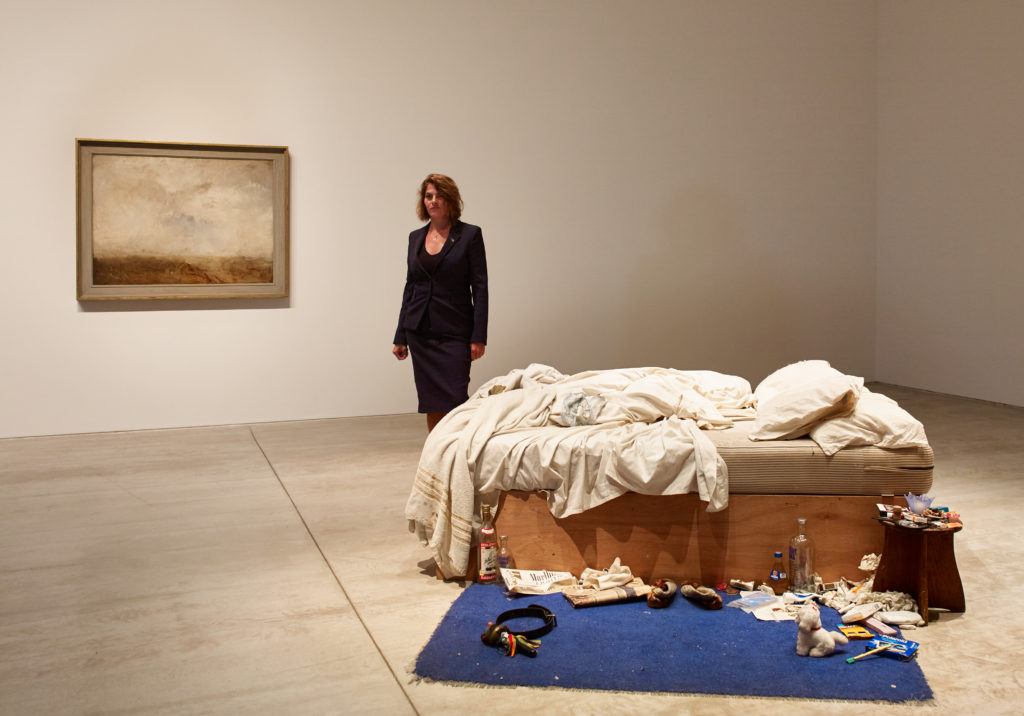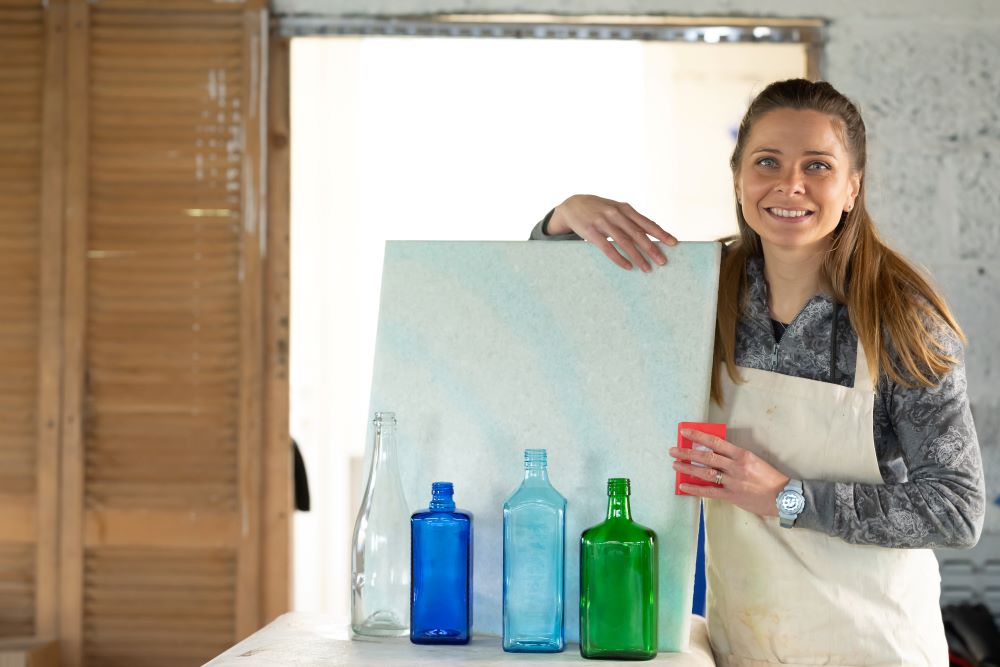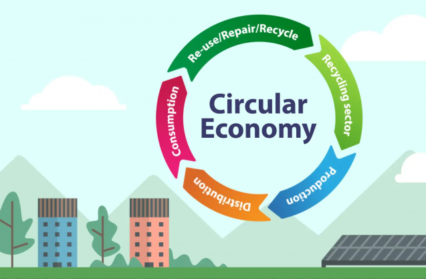Wales Arts Review is proud to present Arts and the Circular Economy, a new series of articles by Brian Royson Mayne, exploring the ways in which different art forms are promoting sustainability and embracing the circular economy. In this second article, Brian Royson Mayne explores the ways in which the visual arts have incorporated principles of the circular economy into their work.
Welsh Government circular economy strategy, Beyond Recycling, aims to move Wales to become a zero-waste, net-zero carbon nation that uses its fair share of resources and seizes the economic opportunities from the transition to a circular economy. The move to a circular economy, which aims to keep products, components and materials in use for as long as possible, is central to the country’s post-Covid response and green recovery in Wales, as well as its commitment to achieving a net-zero economy by 2050. The strategy requires all sectors of the community to participate including art and art organisations. This article will look at the relationship between fine art and sustainability and in particular the circular economy through the work of visual artists and specifically will look at works that incorporate materials that would normally be discarded as a resource rather than a waste.

Art and sustainability have a close relationship that goes back over many centuries. This can be demonstrated through the aesthetic experience of paintings in an online display by visiting Art and Sustainability. The exhibition was developed by ACCIONA and the Thyssen-Bornemisza Museum in Madrid to encourage sustainable thinking. There are a variety of different works from artists, including Vincent van Gogh, which have been selected to reflect the protection of natural landscapes, the growth of cities, the impacts of industrialization, the emergence of women artists and the use of resources and reuse of waste.
Specifically, more and more artists and groups are now creating work that promotes and investigates the circular economy. For example, Art Works for Change are creating contemporary art exhibitions around the world to address critical social and environmental issues. In their project, Survival Architecture and the Art of Resilience, they promote the circular economy by creating structures using materials that can remain in use indefinitely, either through reuse, repair, or deconstruction.
This increased interest in visual art and the circular economy over the past few years is continuing to gain steady momentum. As a result of this, the Ellen MacArthur Foundation, whose aim is to encourage us to re-think, re-design and build a positive future through the framework of a circular economy, employed an artist in residence, Emma Hislop, last year to investigate how can art change our economy for the better.
Emma’s role was to discover the links that connect a circular economy with artistic expression. Through this she highlighted the Transitioning to a circular economy project which is a creative collaboration with the Waste Management Research Group at the University of Southampton. The focus was on communicating the problems associated with waste electronic and electrical equipment. Electrical and electronic waste often contains toxic substances, which if not properly disposed of, can cause pollution and health problems. It is worth noting that whilst we are buying more and more electrical and electronic equipment, a significant amount goes unrecycled. In addition to highlighting this key environmental issue, Susannah Pal, an artist on the scheme, blogged that she “will be creating emotive art that inspires active public participation in the circular economy [to] stimulate behaviour change.”
One of the key principles of the circular economy is keeping products and materials in use. Artists throughout time have utilised this approach of creating art from discarded materials reusing, repurposing and recycling often through economic necessity as well as creative intention long before the term ‘circular economy’ was coined. Here are some of my personal favourites, which show how artists have led the way.

Tracy Emin’s My Bed exhibited at the Tate Gallery in 1999 as one of the shortlisted works for the Turner Prize, consisted of her using her bed with a mattress and white used linens. Beds appear quite frequently in modern art, Robert Rauschenberg’s first ‘combines’, a work called Bed consists of his well-worn pillow, sheet, and quilt, which he framed and then scribbled on them with pencil, and splashed them with paint. Rauschenberg throughout the ’50s and ’60s produced ‘combines’ where he used traditional materials and the detritus of everyday life. However, for me, the works of art created by Marcel Duchamp made from manufactured objects stand out and have continued to be an influential concept in Western art for much of the 20th and into the 21st century. Known as readymades, these artworks consist of ordinary manufactured items selected by the artist and altered. Examples include In Advance of the Broken Arm which was a snow shovel inscribed with that title and perhaps the most famous Fountain, a men’s urinal signed by the artist with a false name and exhibited placed on its back.
As well as being at the forefront of circularity, there have also been other major environmental issues where artists have led the way. A major environmental problem is plastic waste in our oceans. According to the World Wildlife Fund, every minute, about a dump-truck load of plastic goes into the oceans, sullying beaches, hurting wildlife, and contaminating our food supply. Artists have been highlighting this problem for many years, surrealist Spanish artist Joan Miro (1893-1983) collected the rubbish from the beaches washed up on beaches of Mallorca on his morning walks and turned them into colourful monster-like sculptures. Here in Wales, Penarth based artist Terry Setch has been using the plastic detritus from local beaches, as his major subject since the mid-1970s, which as he points out was ‘long before concern about the damage caused by the ubiquitous, non-biodegradable plastic became widespread in this country’.

Another welsh based artist Dr. Tyra Oseng-Rees, however, has taken the circular economy to heart and has developed an innovative way of recycling glass bottles to make sustainable, decorative panels for architectural applications.There are also many examples of circularity in environmental art, a movement adopted by artists of different disciplines, who are inspired by nature or use it as raw material, conveying its beauty and move us to take care of it.
Numerous other painters and sculptors are adopting circular practices and whilst many may not be directly related to delivering a circular economy they are certainly practicing some of the key principles, continuously rethinking ways in which we can reuse, refashion and recycle materials that were previously considered waste. This as previously highlighted could create entry points that bring the topic to new audiences introducing more people to the circular economy.
You might like…
In the first article of this series, Brian Royson Mayne introduces the subject and discusses the origin of the circular economy and how it is being defined today.
Brian Royson Mayne is a fellow of both the Royal Society of Arts and Chartered Institution of Wastes Management. He is a Chartered Environmentalist with extensive experience of working within the Circular Economy this has involved business development, providing advice to SMEs and Social Enterprises.












